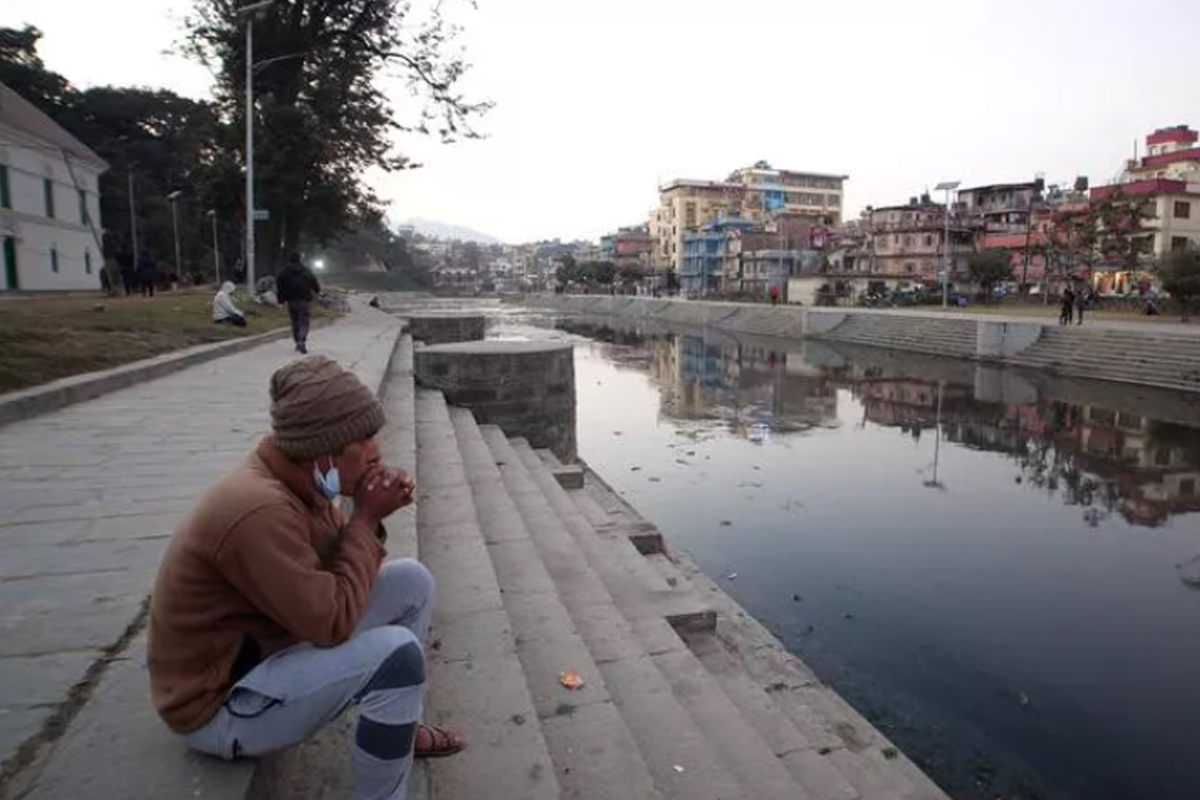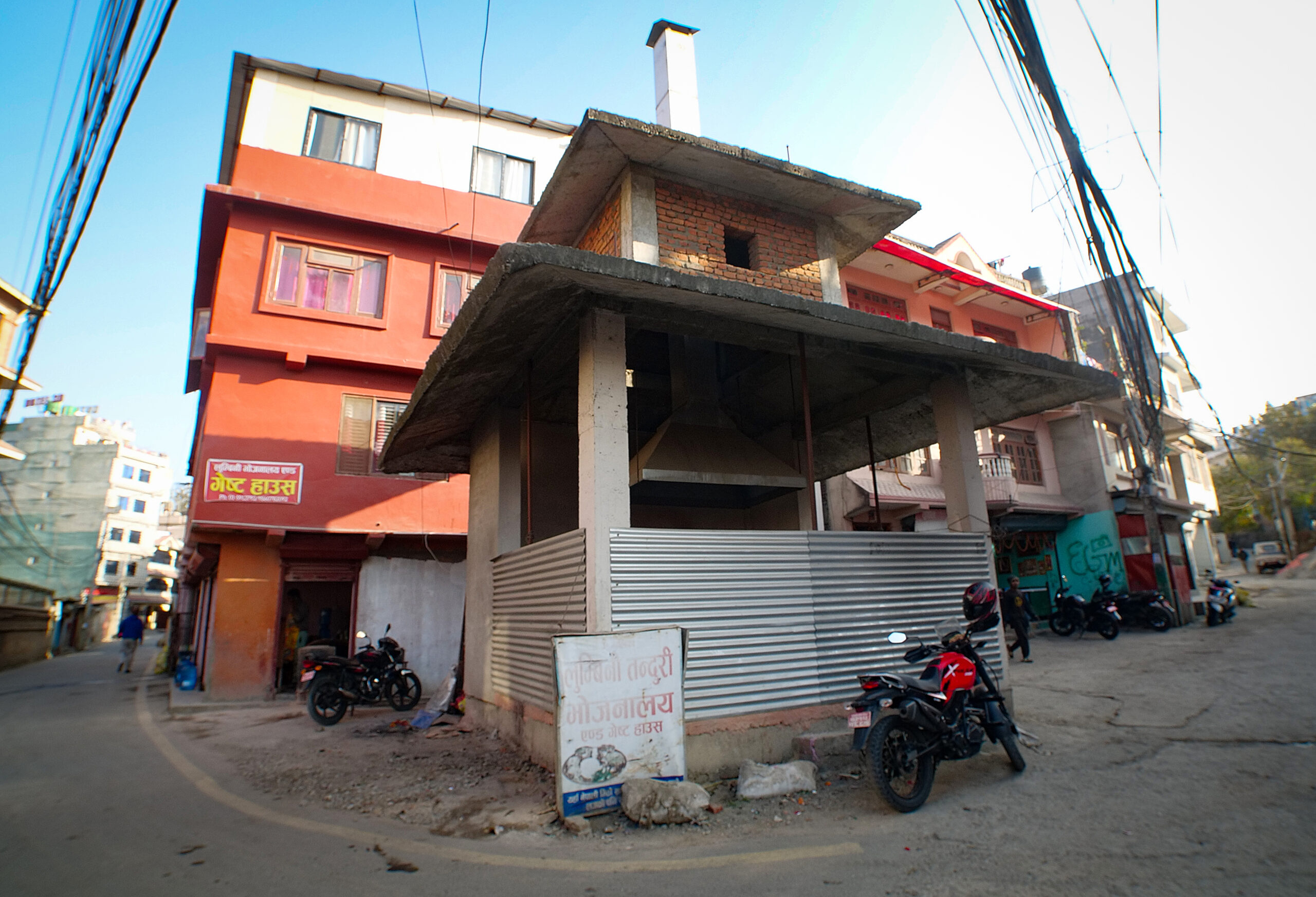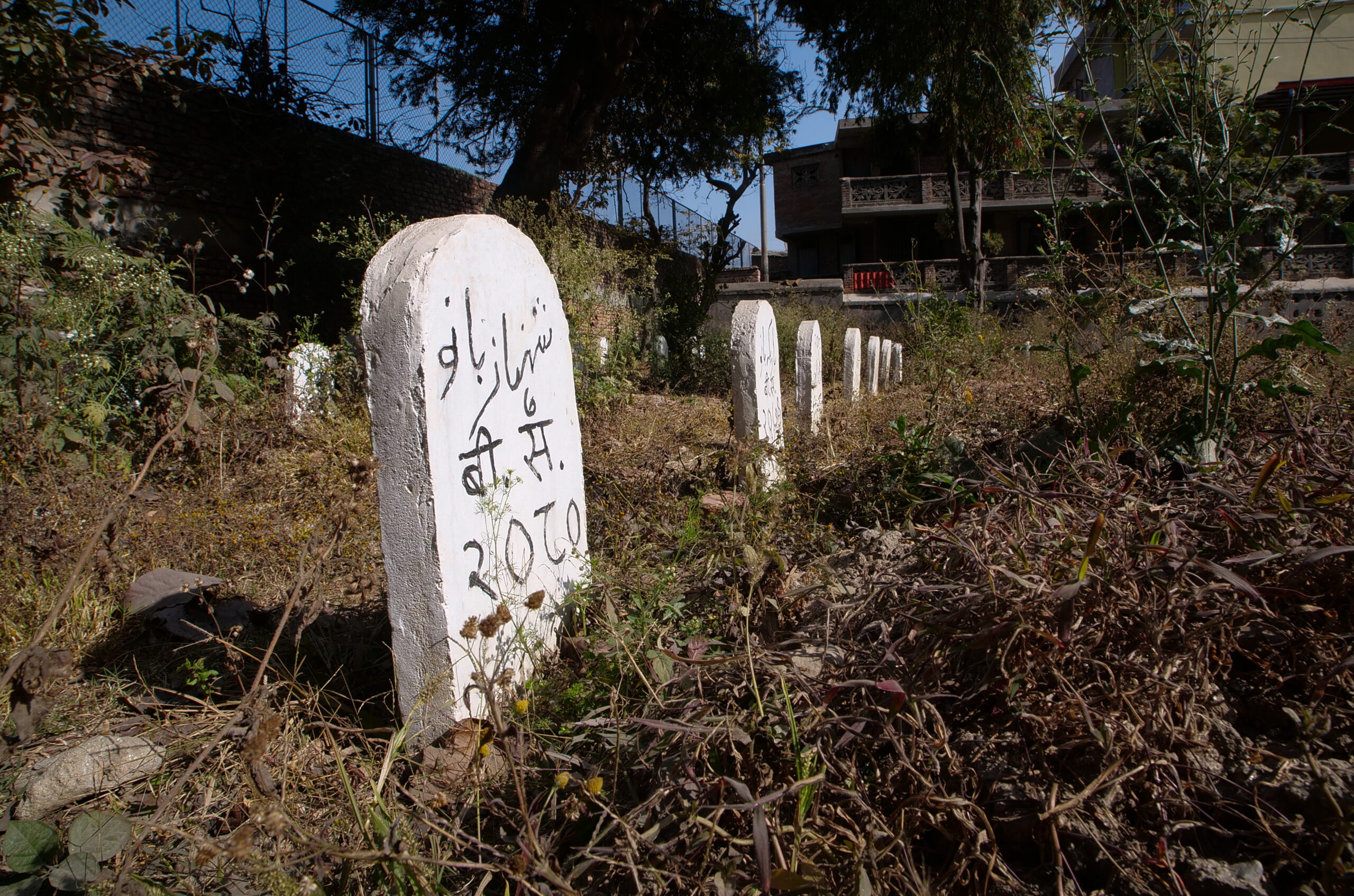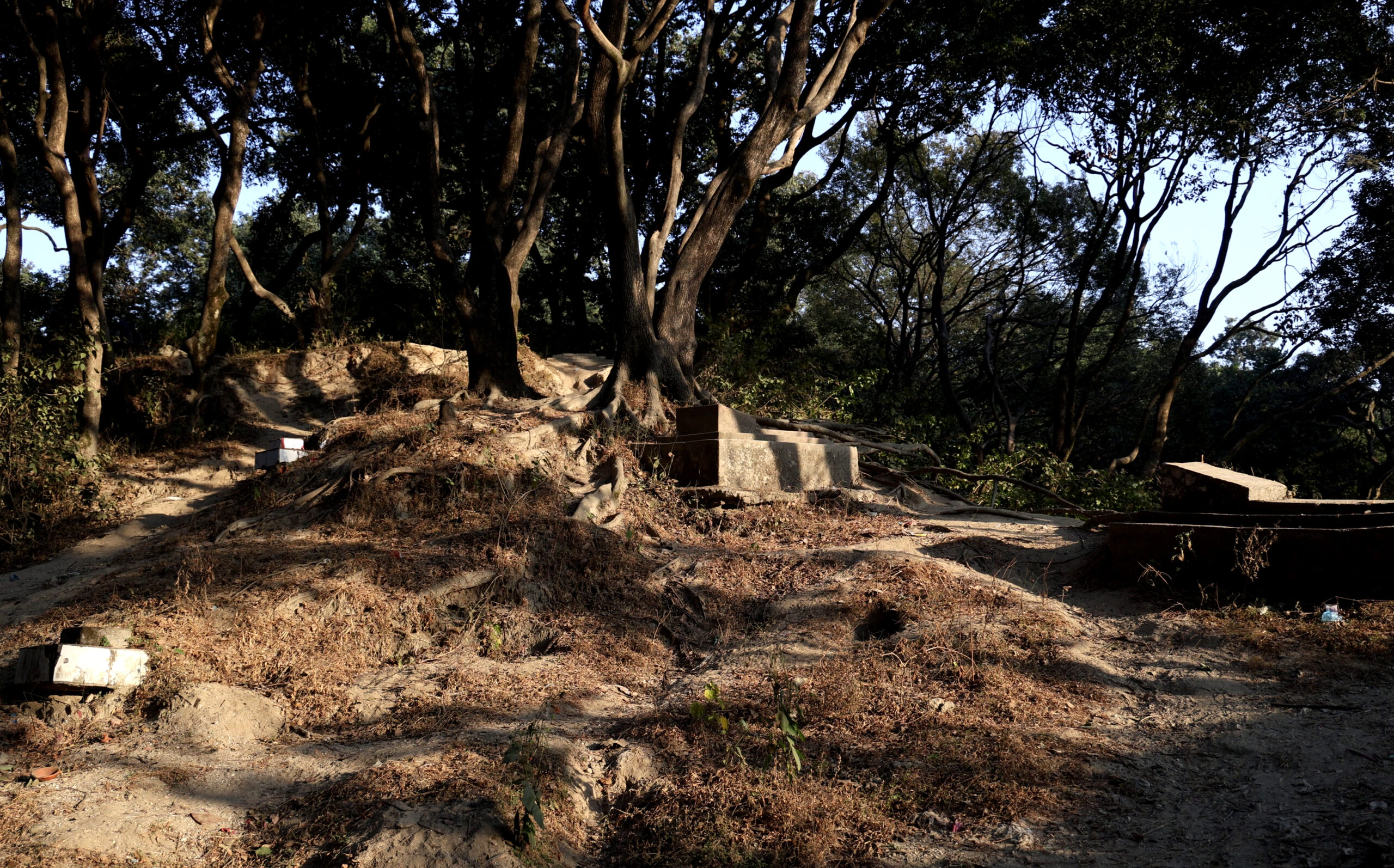Funerary spaces for cremations and burials are shrinking rapidly for Nepal’s minorities
Alisha Sijapati | CIJ Nepal
An unassuming entrance near Pashupati Temple in Kathmandu leads into the Mrigasthali forest. Despite a steady stream of people passing through the sacred grounds, most do not know that for centuries it has been a burial site.
The forest here is where children too young to be cremated used to be buried, as were Hindu ascetics and later the Kirat and Christian population of Kathmandu.
Hindus predominantly cremate their dead, but ethnic minorities like the Kirat, Muslim, and Christian mostly opt for burial rituals in designated areas. For centuries there has been no problems, but this social harmony between the funeral practices of diverse faiths is now being jeopardised by the lack of space as well as recent majoritarian trends.
The burial space for Nepal’s minorities is being increasingly encroached upon despite Nepal’s secular Constitution, and this a source of new friction between communities.
One recent morning along the banks of the Hanumante in Bhaktapur, a group of men dressed in mourning attire were huddled around the flames of a funeral pyre of a dead relative. On the other bank is what looks like a parking lot, but is actually a burial site for a Hindu sect that has been living in the town for centuries.

Aall Photos: Gopen Rai
Rabindra Puri belongs to the Dasnami Sanyasi sect, and his forebears were ascetics who settled down in Bhaktapur and assimilated into the local Newa culture. He looks out at where his father and ancestors have been buried, and says: “Whenever I am down, or there is an important event in my life or my family, I come here and feel the energy of my father.”
One a recent visit to the sacred site, Puri was shocked to see a JCB earthmover levelling the area so cars could be parked where his sect used to conduct the traditional ritual of simulating their own burial. The cemetary serves as a holy place that connects the living with the dead of the Dasnami sect.
“We do not have a say when the government decides to bulldoze over our tradition,” laments Puri, who is a heritage conservation architect and activist. Recently, a young man from Puri’s community who had lost his wife a year ago came to pay his respect to her only to find a latrine was being built on top of her grave.
The Ward chair was building public toilets, and got the contractor to build one over what he thought was an open space. The construction was halted, but across predominantly-Hindu Nepal ethnic groups and religious minorities are finding it more difficult to bury their dead.

In Gangahiti in Chabahil there are two cremation spaces for the Sakya and Dangol clans. Now, there is a tandoori restaurant right behind where the cremation site used to be.
Kathmandu’s Muslim community have a burial site near Swayambhu. Because of the lack of space there, the Jame community has added soil 3m thick on top of the older graves to make another layer of tombs. The 0.5 hectare cemetary is used by both the Jame and Kashmiri sects, and was granted as a token by the Rana regime in exchange for part of the mosque property property in the Jamal area.
“We haven’t encountered issues since we added the elevation, but we are also hopeful that the government will listen should any problems arise in the future,” says Abdul Shamim, of Kathmandu’s Jame Masjid.
The Kashmiris are seeking another burial space near Kathmandu, and the community foresees potential friction with local communities. “It is the teaching of Allah that we have to bury, not cremate, so there are two options: find space to bury or let the body flow down the river,” explains Mohammed Ashraf of the Kashmiri Masjid.
The Kirat community in Kathmandu has a bigger dilemma: opt for cremation or burial. While a majority of families now use the electric crematorium at Pashupati for funerals, not everyone in the community is for it and many want traditional burials.
“But there is simply no space for a cemetary,” says Ganesh Rai, a journalist.

Hanumante Ghat
In 1998, the Supreme Court imposed a ban on all burials within the premises of Pashupati, a UNESCO heritage site. The ban is temporarily lifted under certain conditions, including the use of concrete for gravestones, it was reinstated in 2011. This means ethnic groups that have recently migrated to Kathmandu are having problems for funerals.
The Kirat people, for instance, say they have a right to bury their dead as tradition dictates, just as the increasing Christian population in the Valley who are also lobbying the government for a cemetary near Pashupati. But the lack of burial space means many Christians in Kathmandu use the electric cremation and place the ashes in urns in their churches.
Hindus make up 81.9% of Nepal’s 30 million population with nearly 2.4 million in Kathmandu Valley alone. The Valley also has 84,000 Christians, 48,000 Kirat and 32,500 Muslims, according to the 2021 census. There is just one electric crematorium and a critical shortage of burial sites for this population.
Before 1778, when the Valley’s kingdoms had their own kings and population was small, funerals for all communities were mangeable. But with the explosive urbanisation and the Valley’s population now exceeding 3.5 million, even the Hindu cremation sites are congested and face local opposition.
The Newa people of Kathmandu had cremation sites in Shobha Bhagwati, Chabahil, Maitidevi, Shankhamul, Nakkhu and Balkumari, but these have fallen into disuse, partly due to the absence of funeral pyres and with the expansion of settlements nearby.

Graveyard of Jame Masjid near Swayambhu.
In Gangahiti in Chabahil there are two cremation spaces for the Sakya and Dangol clans where members have been cremated for centuries, but it is now overrun by new neighbourhoods.
Nirmala Karmacharya has lived in Gangahiti for over 20 years, and did not even know that there was a cremation site nearby when her family built their house.
“You never know when there is a creamation, and we have to shut all the windows to keep out the smell,” she says. “The government should have regulated cremation sites better.”
During the Covid-19 pandemic in 2020, Mayor Bidya Sundar Shakya built a gas crematorium in Gangahiti, but there are still frequent clashes between mourners and residents.
“We understand their pain, but there is already a crematorium in Pashupati. Why do they have to come here?” asks Karmacharya.
In 2023, Gangahiti residents won the case in Patan High Court restricting the clans from using the cremation site. Now, there is a tandoori restaurant right behind where the cremation site used to be.
Public litigator Sanjay Adhikari says that Gangahiti residents were well aware of the cremation site before they purchased the property, and it was unfair to the Shakya and Dangol communities to lose their ancestral creamation site.

Shleshmantak, Pashupati where children too young to be cremated used to be buried, as were Hindu ascetics and later the Kirat and Christian population of Kathmandu.
The few ghats at Pashupati on the banks of Bagmati cannot keep up with demand for cremations from Kathmandu’s growing population. Most days, there are long queues of distraught relatives waiting for their turn to perform the last rites. The nearby electric crematorium usually only has one furnace running and there are long waits there, too. State officials have a VIP platform for their cremations and do not have to wait.
The pressure on Pashupati’s cremation area has also grown because other traditional sites along river banks have been overrun by the city’s expansion and are closed.
“Most come to Pashupati because it is the holiest place, and also its relatively efficient service. It is not feasible to go looking for cremation pyres elsewhere,” says Rewati Raman Adhikari of Pashupati Development Trust.
Mrigasthali forest is regarded as a sacred Hindu site where Lord Shiva came to attain salvation, and burials are only allowed for babies and certain ascetic sects, and funerals for other religious groups is restricted here.
“The burial ban also has an ecological aspect to it, we want to preserve these forests, so we don’t want concrete grave stones in the jungle,” adds Adhikari. “Burials of other religions within their sacred site is also not acceptable to Hindus. We must learn to co-exist peacefully.”
When even Hindus find it increasingly difficult to cremate their dead, the majoritarian mindset means that other religions are left to fend for themselves. Despite a secular Constitution, a glaring example of prevailing injustice is that Nepal’s minorities face exclusion even after death.



